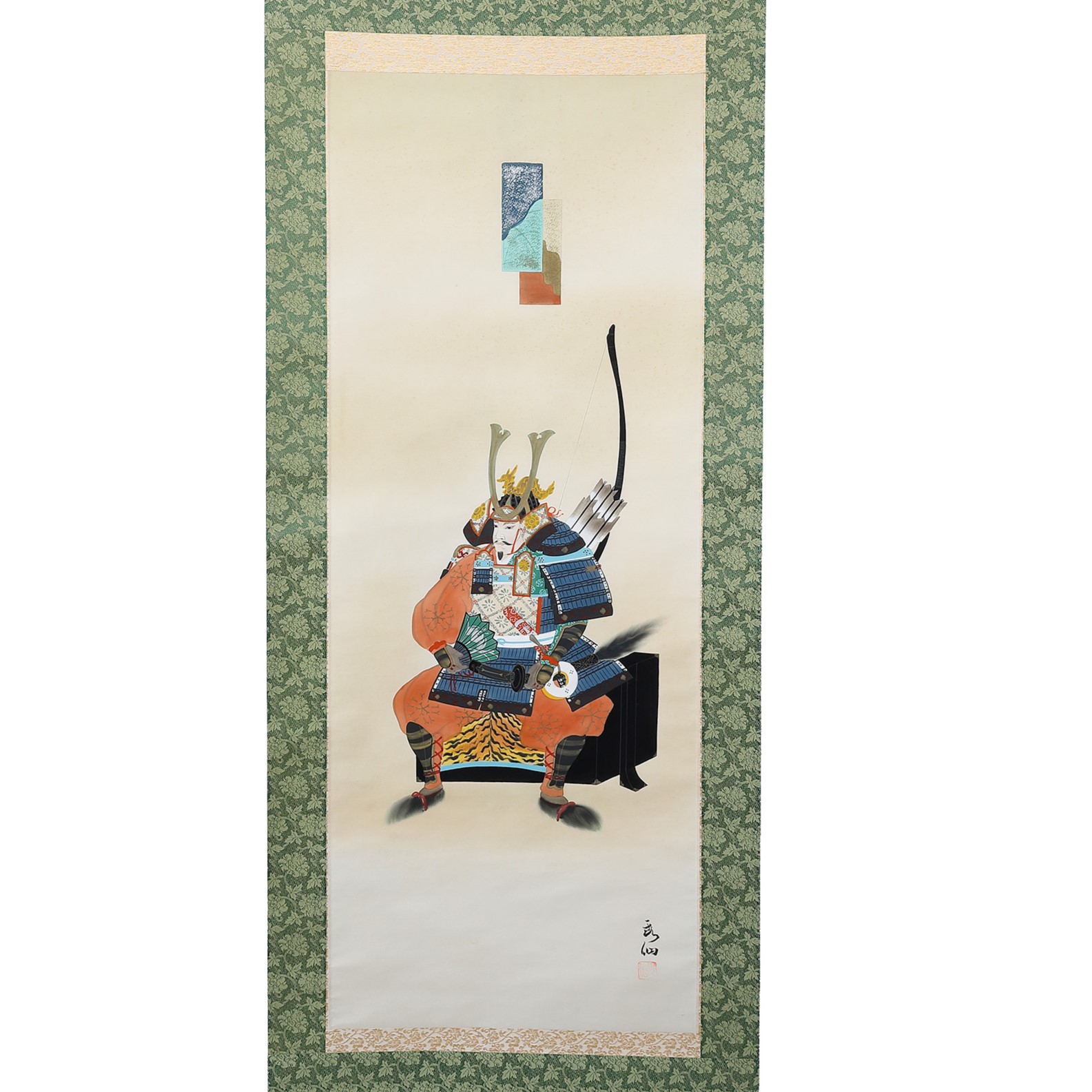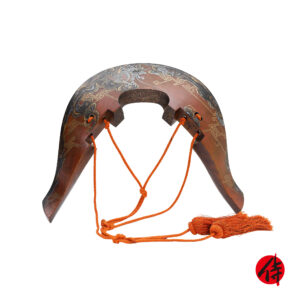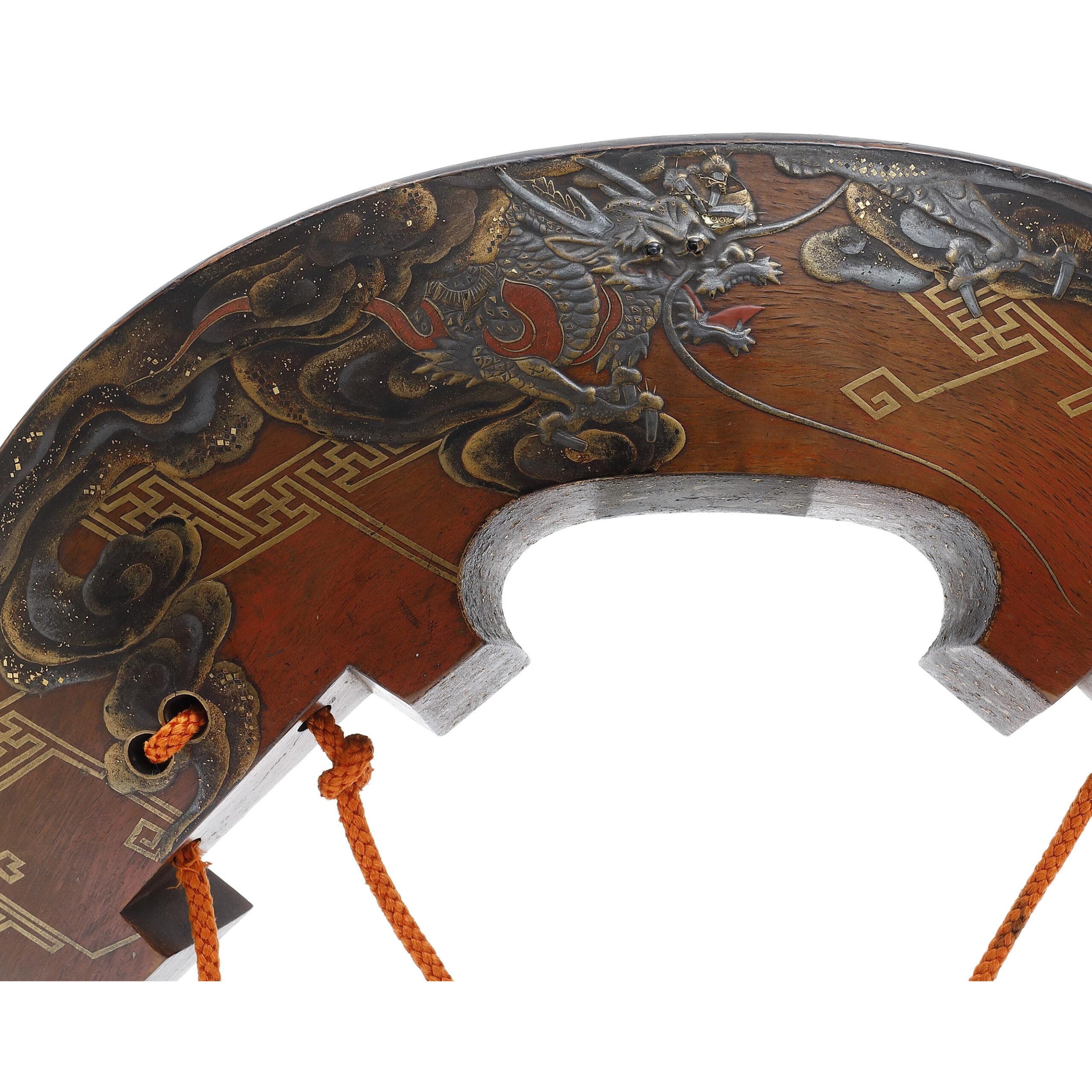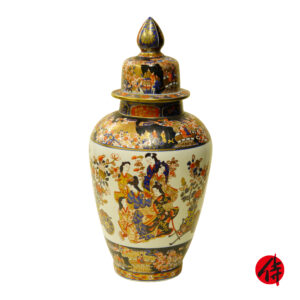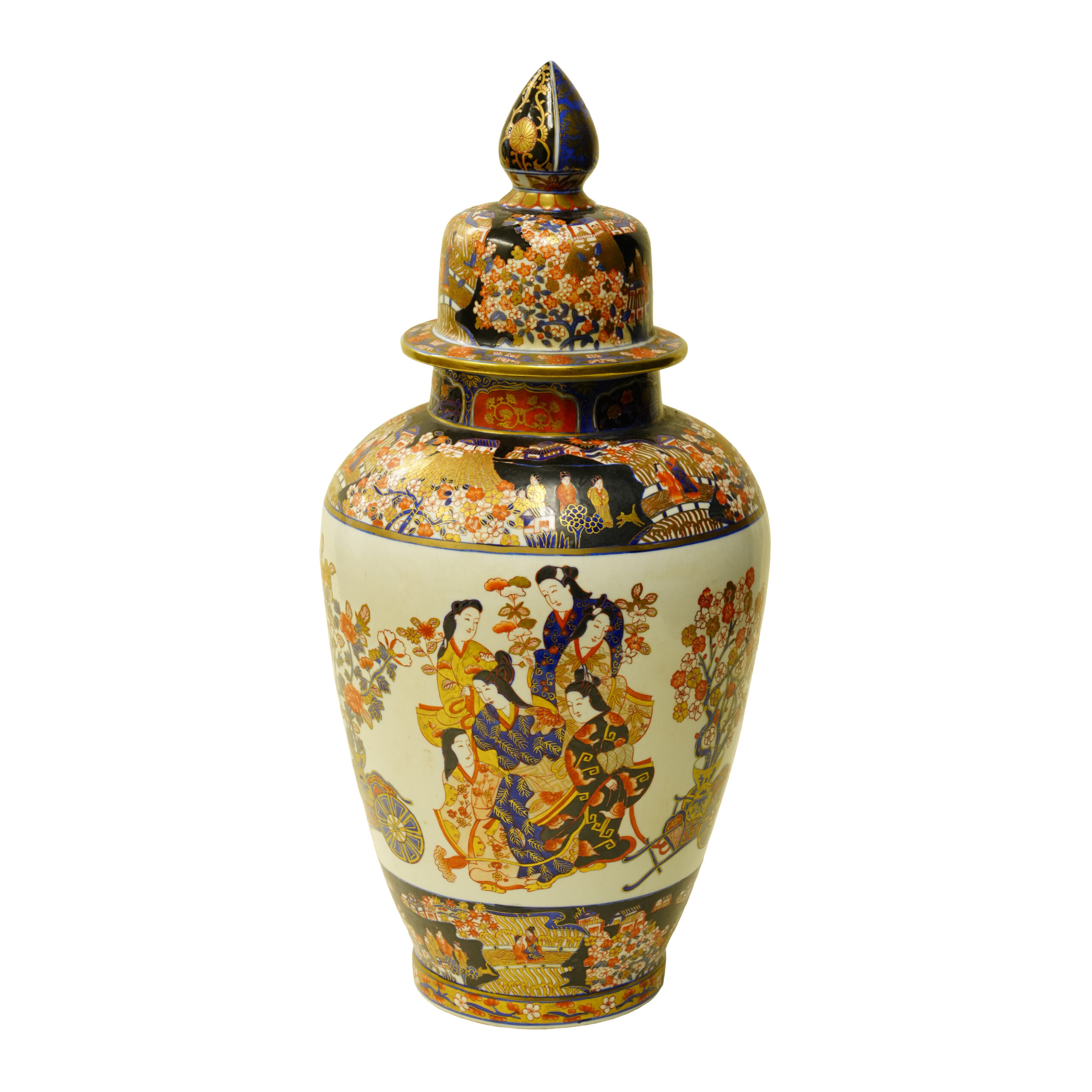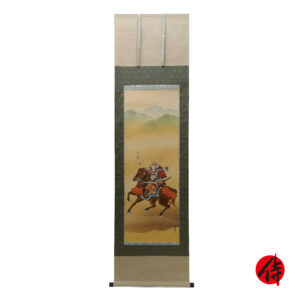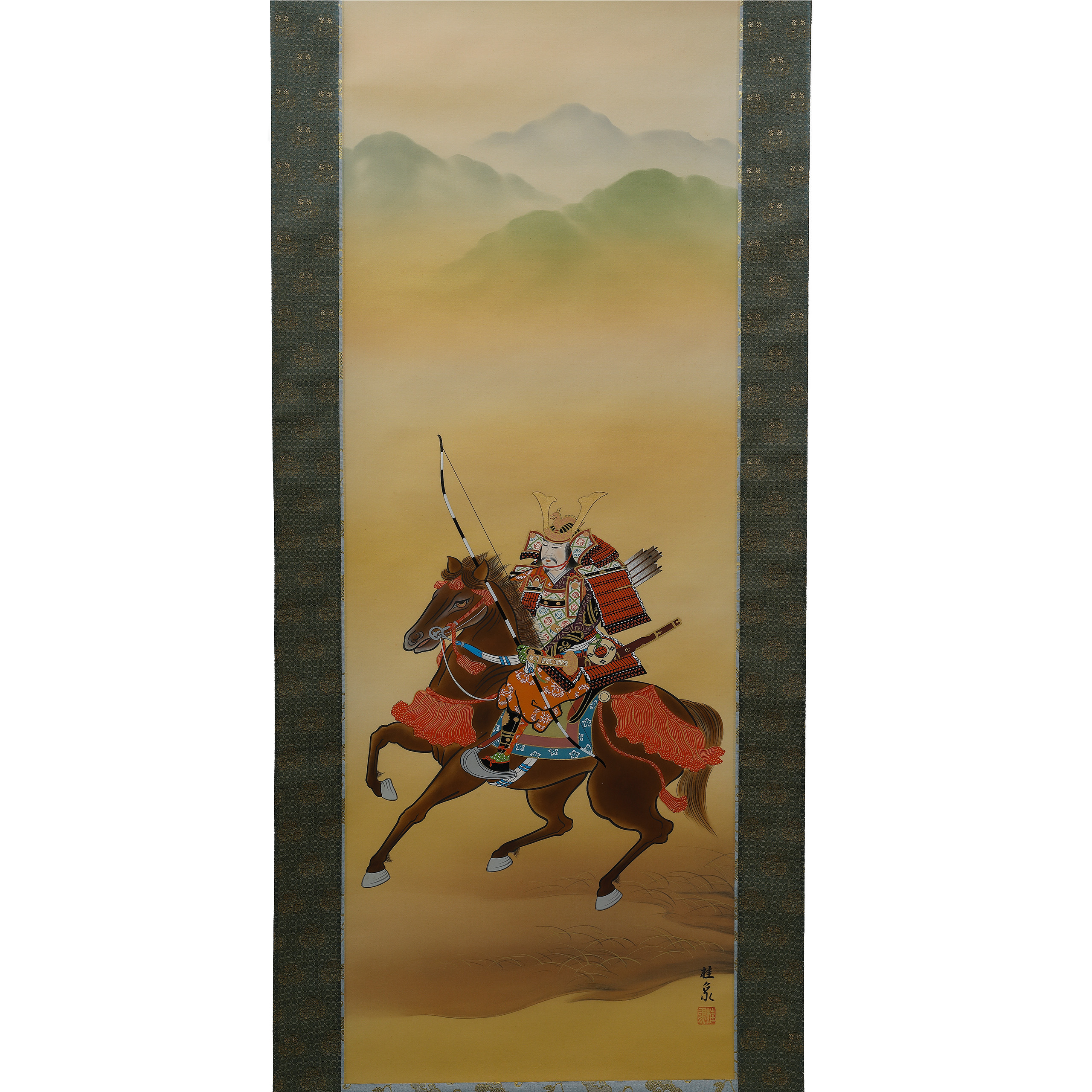Title: Musha Zu
Description
This item is a Kakejiku (掛軸, hanging scroll). When displaying a hanging scroll in a Japanese-style room, it is generally hung on the wall of the Tokonoma (床の間). However, no etiquette says you cannot hang a hanging scroll anywhere other than in Tokonoma or a Japanese-style room. You could enjoy them regardless of where you display them. You could also create an alcove-like space by simply hanging a scroll out of direct sunlight, laying tatami mats under it, and placing Japanese miscellaneous goods and flower arrangements. A Tokonoma is a space in a Japanese-style room where the floor is one step higher than the rest of the room. It was initially thought to be a place where gods resided and was created as a space for people of high status to sit. Since the Edo period, Tokonomas have been created in ordinary houses as a place for guests (high-status people) to sit, and it is considered the most sacred and noble place in a Japanese-style room. In recent years, it has often been set up as a space for art exhibitions, such as hanging scrolls and displaying flowers and ornaments.
Especially this hanging scroll seems to have been the one that was hung in the season of Tango no Sekku (端午の節句). The Tango-no Sekku (端午の節句) is one of the seasonal festivals and generally regarded as the Boy’s Festival. It is said that the Tango-no Sekku comes from the Continent. Since the Muromachi period (1336-1658), there has been a custom in which some kind of items, such as a hanging scroll depicting a Samurai or Samurai armors, were displayed in the hope of boys growing up well and succeeding.
Regarding the design, this Kakejiku depicts a figure of a Samurai wearing an armor with some weapons, such as a sword and Yumi-Ya (弓矢, bow and arrow). Judging from his appearance, this Samurai seems be of very high rank. The bow and arrow called Yumi-Ya (弓矢) was once one of the classical primary weapons for Samurai. Additionally, it was believed that the Yumi-Ya would exorcize evil spirits in the house. And in the Edo period, small bow and arrows were given to baby boys as their first New Year’s gift in hope for them growing to be a respectable Samurai worrier.
This armor consists of several parts, and we would like to focus on some of them. The protector for the head is called the Kabuto (兜, helmet). The Kabuto depicted on this Kakejiku is categorized as the Hoshi Kabuto (星兜), which was born in the middle of the Heian period (平安, around 888-1068). Small rivets that hold iron plates together. These rivets are called the Hoshi (星, star). When people started using the Kabuto, it was initially designed for practical use such as wearing it to turn the attack by swords and so on. However, the principal purpose of its design has changed with time; Samurais tried to express their dignity, personality, or religion by wearing the characteristic design Kabutos. This Kabuto also has a gorgeous dragon-shaped front decoration, and it symbolizes strength and valor. Judging from its magnificent decoration, this Kabuto, which was allowed only for commanders, exudes the dignity of manhood and strength.
If you look at the cuirass, you can see a pattern of Kiku (菊, chrysanthemum). The chrysanthemum is one of the flowers that symbolize fall, and people have appreciated it very much since ancient times. A long time ago, the chrysanthemum was used as a medicine to obtain a long life in China, and it was brought to Japan with this thought in the Nara period (648-781). As its petals form radially, the chrysanthemum has been likened to the sun. That is why this flower pattern is treated as the symbol of perpetual youth and longevity or good health. “Kiku no Gomon (菊の御紋)” is a kind of chrysanthemum pattern, and it has been used as the crest of the Emperor and the royal family in Japan, so it is well-known as a noble pattern.
On the fan he is holding, there is a flower design. It seems to be Kakitsubata (杜若/燕子花, rabbit-ear iris). The Kakitsubata colors the waterside during their short flowering time; Japanese people have loved this elegant appearance since ancient times. This flower has been treated as a motif in various arts, such as poems or pictures. There is a famous collection of Japanese poems that is called the Ise Monogatari (伊勢物語, The Tales of Ise). One of the well-known episodes in this book treats the Kakitsubata. The plot of the story is as follows. The protagonist no longer felt comfortable living in the city and decided to go to the eastern country, which was the countryside at that time. He left the town with his friends, and during the journey, one of them found that Kakitsubatas were blooming at the waterside. The protagonist was requested to write a poem using characters of the Kakitsubata (it is written as かきつばた in Hiragana character), and he responded to this challenging request. He composed a nostalgic poem, and it made them feel homesick for their home or families.
Along with the gorgeous appearance of the armor, there is an atmosphere of bravery and dignity on this hanging scroll.
*As this item is an antique, please check each photo and ensure its condition.
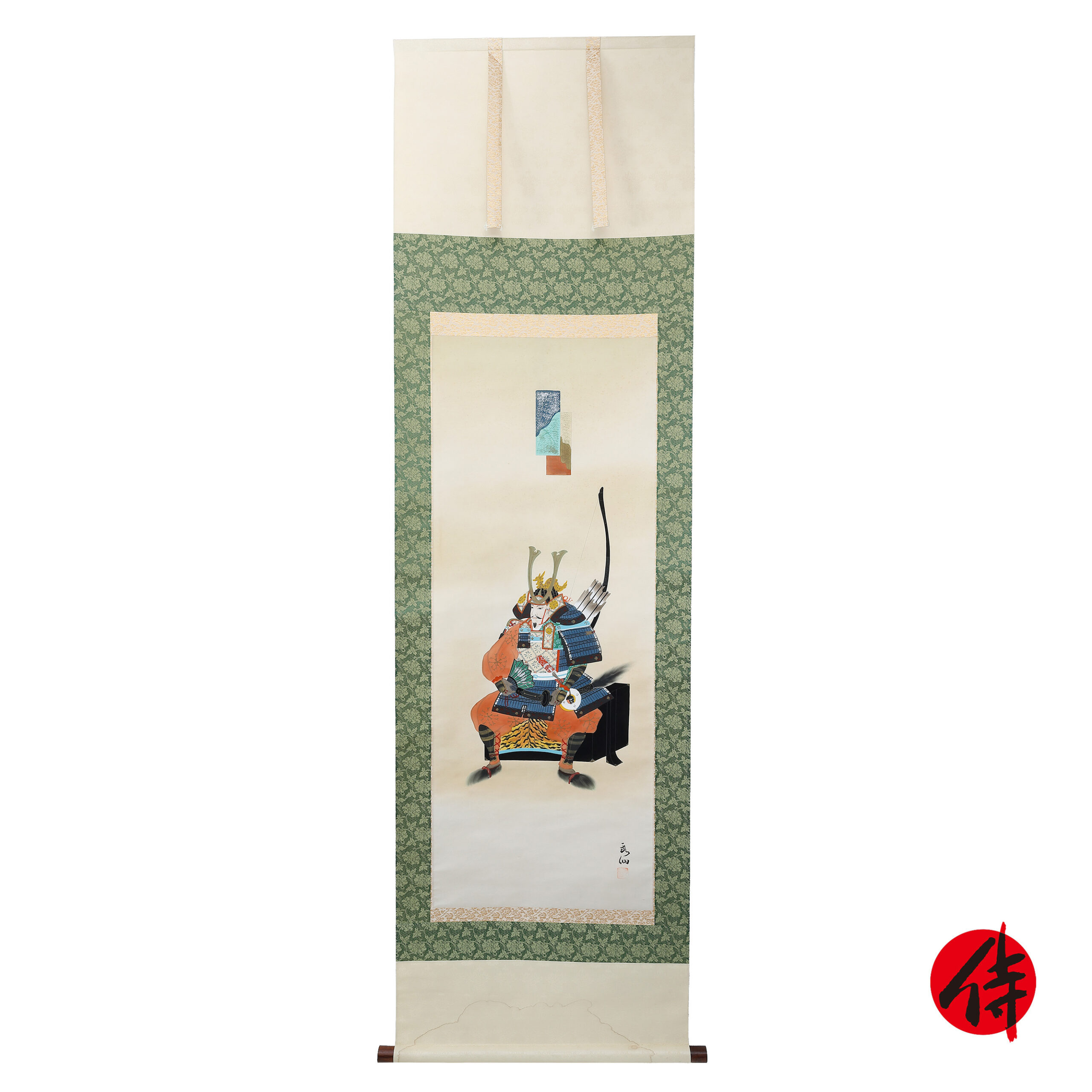


Example of how to decorate a hanging scroll
This image is an example of how to decorate a hanging scroll. Hanging scrolls are an interior decoration that could be enjoyed by changing them according to the seasons. We hope you find your favorite designed hanging scroll and enjoy decorating your room with your great collection.

【About us】
Samurai Museum is located in Tokyo, Japan, exhibiting antique artifacts related to the Samurai history. Samurai Museum Shop is the place for those who are interested in Japanese culture and craftsmanship. We deal with antique Samurai swords/armor, traditional crafts made in Japan and so on.
【Payment method】
We accept payment through Stripe (Credit card), PayPal, Apple Pay or ChromePay, all of which are secure payment methods. Also, you don’t need to make an account on Stripe for the checkout. If you prefer other payment method, please contact us. You may either pay in JPY, USD, AUD, CAD, EUR, CHF or GBP. The price is set in Japanese Yen. Prices in other currencies are automatically calculated based on the latest exchange rate.

【Shipping duration】
We normally ship via EMS (Express Mail Service) provided by Japan Post. It usually takes at least 5-14 days to deliver the package after you place an order. Time of delivery is estimated as accurately as possible by the carrier but does not take into account any delays beyond our control such as by inclement weather, post office holiday seasons.
We offer Free International Shipping as long as we can ship your order by EMS. If you prefer other shipping carriers, please contact us.
We will inform you of the order’s tracking number via email. Please make sure you fill out your valid email address correctly.
*If you like to make sure if EMS shipping is available to your country, please contact us.

【How to make sure the condition】
Please keep in mind that what you are going to purchase is an antique item. We uploaded high resolution photos for you to check its condition thoroughly. If you like to see more photos with different angles, please feel free to contact us. We will be happy to send them to you so that you can make informed decision.
It is essential for us to know that you are happy with your choice of antique item and we are prepared to use the best of our ability to serve you.
Would you like see some more antique items for sale? Please check the link below. We hope you can find your favorite item.
https://www.samuraimuseum.jp/shop/product-category/antique/
